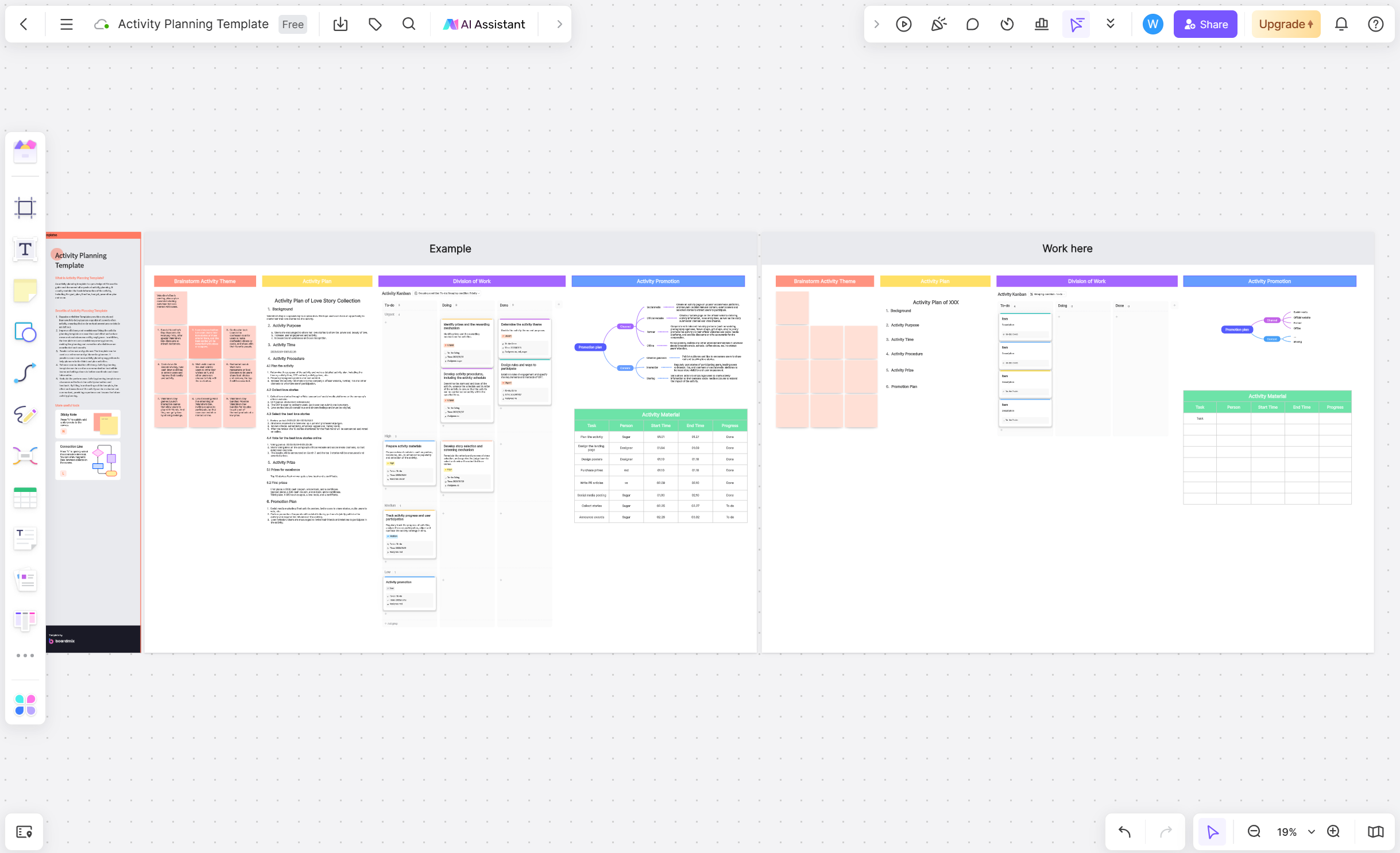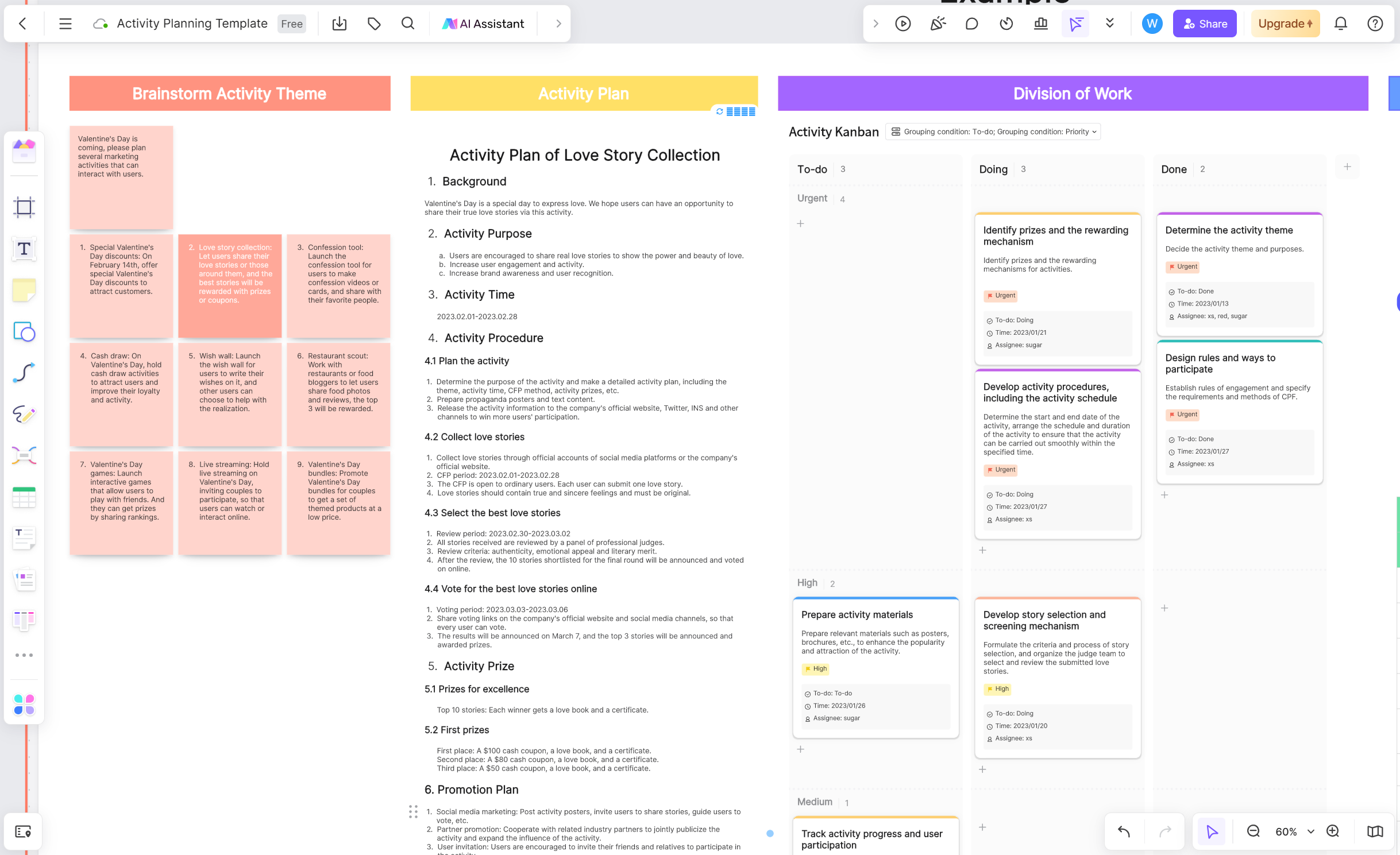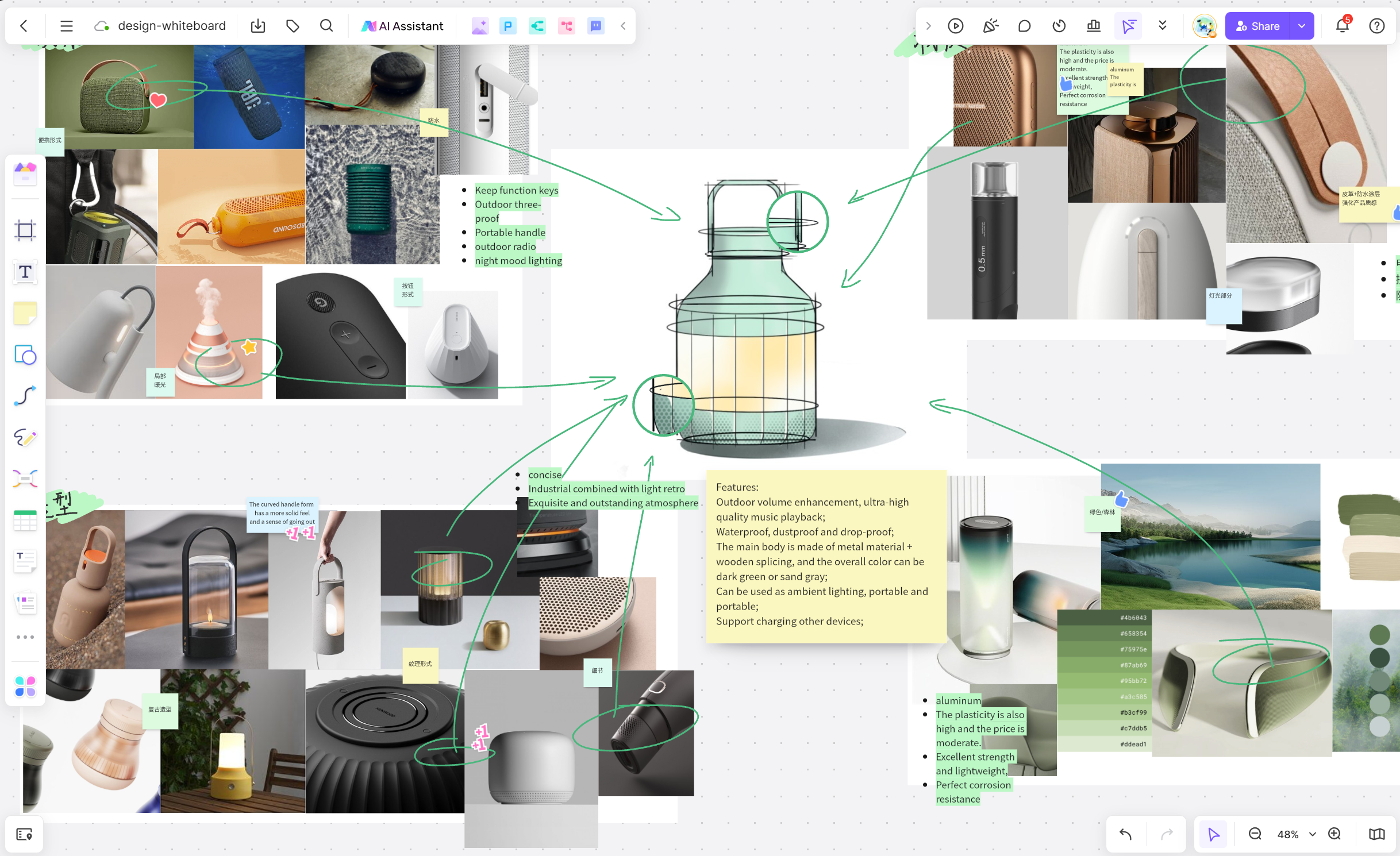Whether it's for business, education, or personal projects, a whiteboard can be an invaluable tool for Planning. Whiteboard provides a visual platform where ideas can be mapped out, strategies can be developed, and progress can be tracked. Here's a comprehensive guide to using a whiteboard effectively for planning.
Understanding the Importance of Whiteboards in Planning
Firstly, you need to understand the purpose of your planning. Are you brainstorming ideas for a new project? Are you mapping out a timeline for a business initiative? Or are you tracking the progress of ongoing tasks? Knowing your purpose will help you decide how to structure your whiteboard.

Click Here to Start a Free Whiteboard
Secondly, choose the right type of whiteboard. There are different types available, including traditional whiteboards, interactive whiteboards, and digital whiteboards. Traditional whiteboards are great for simple brainstorming sessions and quick notes. Interactive whiteboards allow multiple users to contribute simultaneously, making them ideal for collaborative planning sessions. Digital whiteboards offer additional features like saving and sharing capabilities.
Once you've chosen your whiteboard, it's time to start organizing your thoughts. Use different colors to categorize information and make it easier to understand. For example, use one color for tasks, another color for deadlines, and another color for responsible parties.
A whiteboard is a powerful visual tool. Its most compelling attribute is its simplicity and versatility. In a world where technology reigns supreme, it’s refreshing to know that an uncomplicated device like a whiteboard can aid in high-end strategy formulation.
Whiteboards allow you to take an abstract concept and translate it into a visual guide that's easy to understand and remember. Studies have shown that people retain visual information up to 65% better than purely written data. Consequently, by using a whiteboard for planning, you're harnessing the power of visual learning to enhance your organization's productivity.
Identifying the Right Whiteboard
Selecting the ideal online whiteboard for effective planning is not just a necessity, but an art. The myriad of options available can make it a daunting task, akin to finding a needle in a haystack. However, fear not! With the right approach and consideration, you can find an online whiteboard that will revolutionize your planning process.
The first thing to consider is ease of use. An online whiteboard should be intuitive and user-friendly, reducing the learning curve for all participants. "Everything should be made as simple as possible, but no simpler." In other words, simplicity should never compromise functionality.
Next, consider the collaborative features of the online whiteboard. Can multiple users edit in real time? Is there an option for video conferencing or screen sharing? These features are crucial for fostering teamwork and promoting dynamic discussions. As the famous saying goes, "Alone we can do so little; together we can do so much."
Finally, security cannot be overlooked. In an era where data breaches are increasingly common, your chosen online whiteboard must prioritize data protection and privacy. It's not just about keeping your plans confidential; it's about ensuring peace of mind.
Now that you have these insights at your fingertips, may your journey to find the perfect online whiteboard be smooth and successful! Certainly, one highly recommended online whiteboard is BoardMix. It's a versatile tool that excels in all the key areas we've discussed earlier.

The collaborative features of BoardMix are top-notch. It allows multiple users to edit and brainstorm in real-time, fostering a truly collaborative environment. Additionally, it offers video conferencing and screen sharing capabilities, making remote collaboration feel almost as natural as being in the same room.
Crafting Your Plan on the Whiteboard
Crafting your plan on the whiteboard involves several steps:
1. Define Your Objectives
Firstly, clearly define what you're hoping to achieve from the plan you're creating. Identifying your objectives guides your planning process, keeping you aligned with your goals.
2. Outline Your Process
Next, outline the processes required to reach these objectives. By laying out these steps on the whiteboard, you can visualize how each process will interact with one another.
3. Identify Resources
Use different color markers to list the resources you need for each step of your process. Resources could include team members responsible, time frames, and any materials or equipment needed.
4. Establish Timelines
Timelines are an essential part of any planning process. Use horizontal or vertical lines to mark time frames for each step of your plan. This visual representation will help keep everyone on track and aware of any impending deadlines.
5. Monitor Progress
Finally, your whiteboard plan should serve as a live document that is continuously updated to reflect progress. The visual nature of a whiteboard makes it an excellent tool for tracking progress at a glance, making it easier to identify bottlenecks or delays.
Conclusion
By learning to use a whiteboard effectively for planning, you’re not only organizing your thoughts but also improving the workflow of your entire team. This simple yet powerful tool promotes collaboration, boosts productivity, and enhances problem-solving abilities. Indeed, the magic of a whiteboard lies in its ability to simplify complex concepts, making them digestible and actionable. Remember that the key to a successful plan is in its execution, so let your whiteboard be the roadmap to your success.







![[2024] Top 12 Free Online Whiteboard Tools That Should Be on Your Radar](https://cms.boardmix.com/images/brainstorming/thoughts.png)

